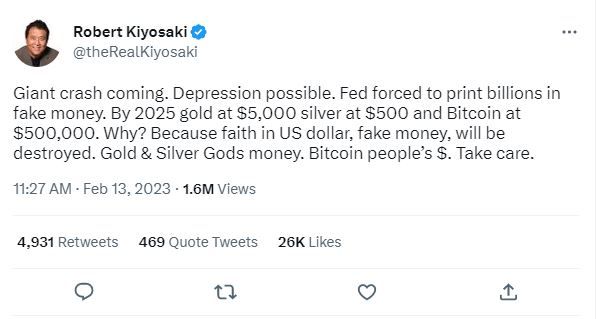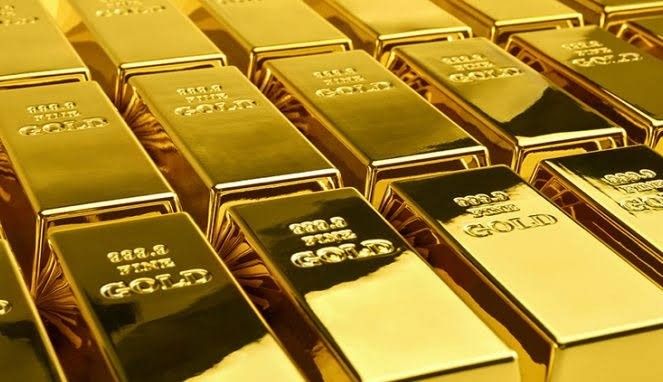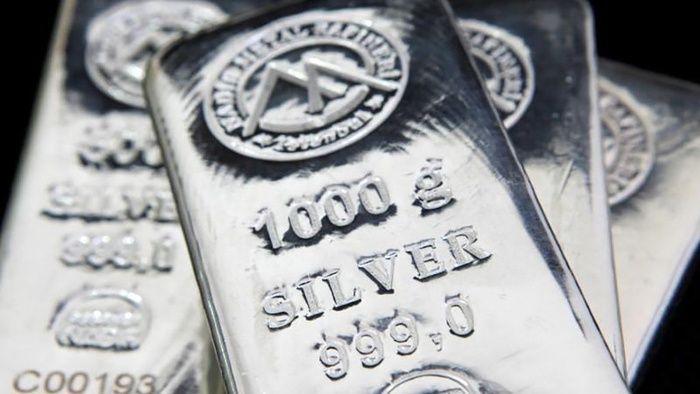Robert Kiyosaki said that the Federal Reserve was "forced to produce billions of counterfeit money," which is how he characterized the US dollar, in a tweet on February 13 that included the phrases "a massive crash coming" and "a probable depression."
On the other side, he predicts that by 2025, faith in the US dollar, a kind of counterfeit money, would be destroyed, causing gold to reach a price of $5,000 per ounce, silver to reach a price of $500, and Bitcoin to reach a price of $500,000. Finally, he describes Bitcoin as "people's dollars" and alludes to gold and silver as "God's money."
The bestselling author of the personal finance book "Rich Dad Poor Dad," Robert Kiyosaki, has made some gloomy predictions about the future of the economy while promoting gold, silver, and Bitcoin (BTC) as alternatives to the US currency.
He has previously emphasized that investors should steer clear of fiat money and instead concentrate on stockpiling precious metals like gold, which he predicts to climb in the next months due to central banks' accumulation, while forecasting that stock markets will probably continue to decline.
Kiyosaki called Bitcoin "the people's money," referred to it as the "flagship decentralized finance (DeFi) asset," and listed it as one of the three "hottest subjects" in the world, along with silver and gold. He also attributed Bitcoin's bullish rally in January to rising demand for alternative investment products.
Robert Kiyosaki, a well-known opponent of the fiat currency system in the US and around the globe, had previously expressed concern about a potential hard landing and warned that the world was already in recession.
The first cryptocurrency, which according to Kiyosaki will be worth $500,000 by 2025, was trading at $21,756 as of press time, down 0.8% from the previous day and 5.19% from the previous week, but still showing a growth of 9.1% on its monthly chart, according to data gathered on February 13.
It's also important to note that the Rainbow relative strength index (RSI), one of Bitcoin's key technical indicators, turned green for the first time on February 12 following a protracted decline, indicating long-term positive momentum.



